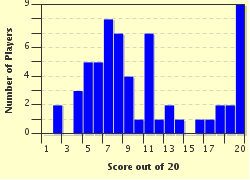Quiz Answer Key and Fun Facts
1. What was the first town in New Zealand to be considered a city?
2. What is the deepest lake in New Zealand?
3. Which river in the South Island is New Zealand's second longest?
4. What unique feature did the Rakaia River Bridge have when it was constructed in 1959?
5. What is the most northerly point in New Zealand's territory?
6. In land area, what is New Zealand's second largest city?
7. Lake Taupo is the crater of an ancient volcano.
8. The lowest point in New Zealand on land is where?
9. What year was New Zealand discovered by Dutch explorer Abel Tasman?
10. What year did the population of New Zealand reach four million?
11. Lake Taupo is New Zealand's largest lake in surface area, but what is the second largest?
12. New Zealand has three main islands; South, North and Stewart Island. These are the three largest. Which is fourth largest in New Zealand's territory?
13. Which of these volcanoes is New Zealand's most active?
14. New Zealand sits on the edges of what two techtonic plates?
15. Mt Cook is New Zealand's highest peak. Which are second and third highest?
16. What is the name of the small, low lying island near the mouth of the Clutha River?
17. What type of volcano is New Zealand's most destructive but least frequent in terms of eruption events?
18. Waipoua Forest in Northland has what famous tourist attraction?
19. Wild moose lived in which remote area of New Zealand?
20. Where in New Zealand could you find a radial river pattern?
Source: Author
youngmade
This quiz was reviewed by FunTrivia editor
Tizzabelle before going online.
Any errors found in FunTrivia content are routinely corrected through our feedback system.


